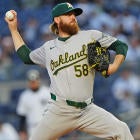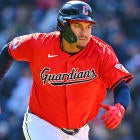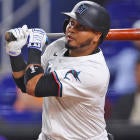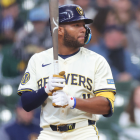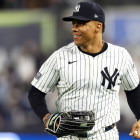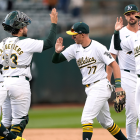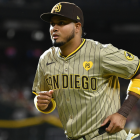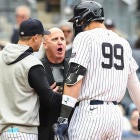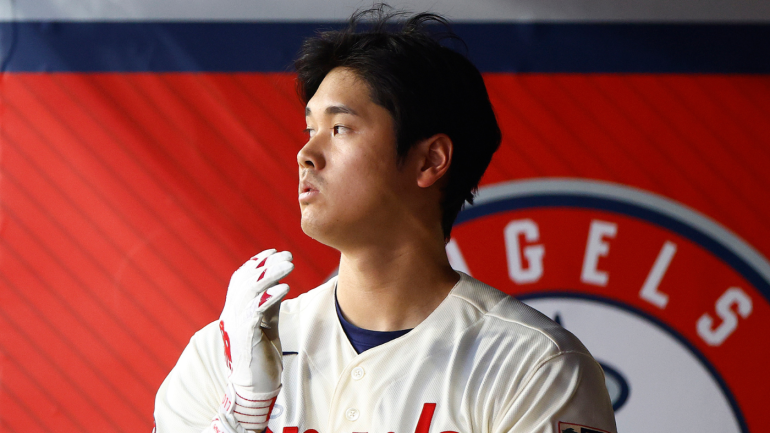
With less than two weeks to go until Major League Baseball's trade deadline, the most intriguing active storyline concerns whether or not the Los Angeles Angels will trade two-way star Shohei Ohtani. For as painful as it would be to trade Ohtani, the game's best player, the Angels may have to face reality. They're not likely to reach the playoffs, and they're even less likely to convince Ohtani to stay beyond his encroaching date with free agency this winter.
Should the Angels seriously entertain trade offers for Ohtani over the coming days, they'll venture into a surreal exercise. Never before has a team entered July's mad season marketing a player who can be regarded with confidence as both the best available hitter and the best available pitcher. The mere thought is hard to fathom and harder to contextualize. That alone makes you wonder: just how much could the Angels get in return if they commit to making a deal?
In an attempt to answer that question, we here at CBS Sports polled a variety of industry insiders for their best guesses about what an Ohtani package could look like in general terms. Please note that these individuals work in various roles for various teams, ranging from analysts to scouts to above. They were each granted anonymity to avoid any tampering-related accusations.
What the industry says
Predictably, given the unprecedented circumstances surrounding Ohtani's talent and encroaching payday, there was a fair amount of variance in the answers we received. For the sake of streamlining this piece, we've decided to offer three reference points: the extremes and the perceived middle ground.
We'll begin with what a source deemed as "an insane ask." That would entail the Angels receiving four or five young players, including at least a top-25 prospect, as well as a couple of other high-grade youngsters and a big-league player or two. Essentially, a deal that sounds a lot like what the Washington Nationals received last year from the San Diego Padres for Juan Soto.
Another source put forth what we later identified as the Goldilocks answer: not too extreme either way, but somewhere in the middle. Fittingly, it reads like a watered-down version of the above.
Under this scenario, the Angels would settle for a combination of two or three good young players -- be it in the form of top prospects, pre-arbitration big-league talents, or both. If that feels a little too light to be the "medium" option for a player of Ohtani's caliber, then you can blame teams for how they've valued rental players over the last several deadlines.
"Deadline prices for star players in their last year haven't been great lately," the source said. "That second year [of team control] is enormous."
Soto, to reuse the example from above, had 2 1/2 seasons of team control remaining when he was sent packing from the Nationals to the Padres.
And, at last, there was the source who veered in the other direction by saying the logistics of an Ohtani trade made it unlikely to occur.
"He might be too good to trade," they said. "If I'm giving up that kind of talent haul, I want to know what it will take to extend him, and that his people are open to that conversation. I don't think those requirements are going to be met in a midsummer deal."
No matter which template you feel best aligns with how Ohtani's half season -- and the exclusive negotiating rights that come with it -- should be valued in trade talks, you have to concede there's validity in each argument.
What history says
Once more, you're out of luck if you're looking for a direct, one-to-one comparison to an Ohtani trade. We do think recent deadlines have provided some hints as to what the Angels could reasonably expect to get in return, however, and they nod to two of the templates proposed by our insiders.
We've referenced the Soto trade throughout this piece, so we may as well expand on it here. As a refresher: the Nationals shipped out two-plus seasons of Soto as well as rental slugger Josh Bell; in return, they netted lefty MacKenzie Gore, shortstop CJ Abrams, outfielders James Wood and Robert Hassell, righty Jarlin Susana, and veteran first baseman Luke Voit.
Nearly a year later, the deal has been a mixed bag. Soto remains a highly productive member of the Padres lineup; meanwhile, Wood has become one of the best prospects in the game and both Gore and Abrams have done enough at the big-league level to envision them growing into solid or better contributors. On the negative side, Hassell's stock has cratered; Susana has scuffled in A-ball (albeit understandably since he's a teenager); and Voit is gone.
Again, the Soto deal is akin to the extreme proposal offered above. As for a real-life comparison to the "Goldilocks" template, we submit yet another deal involving the Nationals.
Remember back in 2021, when they sent righty Max Scherzer and shortstop Trea Turner to the Los Angeles Dodgers? In return they gained catcher Keibert Ruiz, right-hander Josiah Gray, outfielder Donovan Casey, and right-hander Gerardo Carrillo. Perhaps this a stretch, but by trading a half-season of Scherzer and a season-and-a-half of Turner they effectively dealt a top pitcher and hitter -- or, what a team would be getting by acquiring Ohtani alone.
Two years on, both Scherzer and Turner are with other teams after playing out their respective strings with the Dodgers. Whatever you make of Ruiz and Gray at this point -- Ruiz has since signed a long-term extension with the Nationals, and Gray recently made the All-Star Game despite middling component measures -- they were two young, promising players who seemed to have average or better potential. (Casey, an overage outfielder, and Carrillo, an undersized reliever, have yet to make an impact on the big-league side, and it's unlikely either will change the calculus of the trade in a meaningful way.)
Would the Angels trade Ohtani if they could get their own version of Ruiz and Gray? Or would they be unmoved with anything short of the Soto package? We'll find out soon enough.














